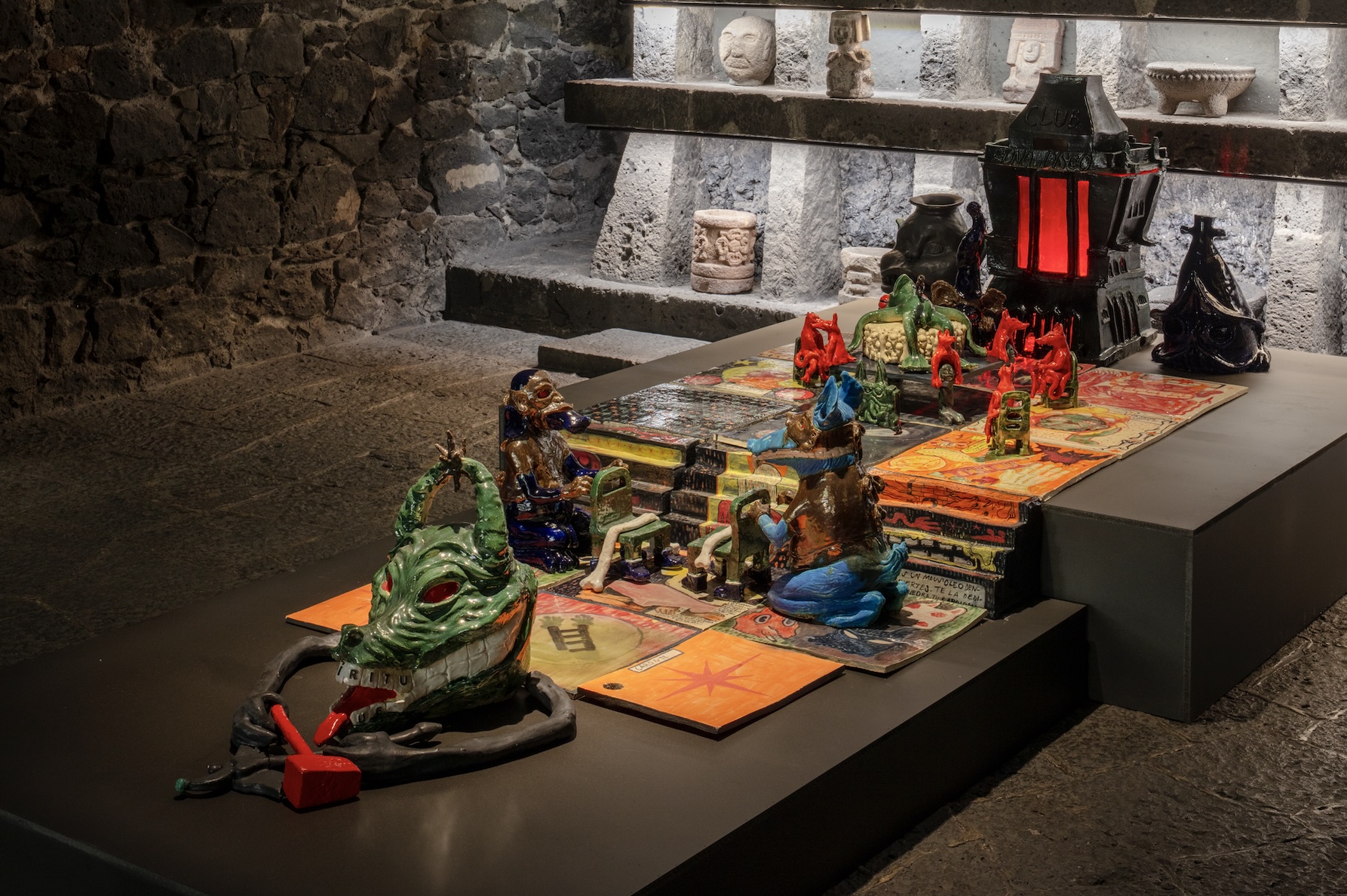
Review
Spectral Figurations: "¿Cómo se escribe muerte al sur?" at the Anahuacalli
by Mariel Vela
Reading time
4 min
The sun sits high in the sky. The light is so intense that, upon entering the Anahuacalli, I’m briefly blinded. This darkness, born of volcanic depths, leaves black splotches before my eyes—splotches that blur the faces of the Olmec, Toltec, and Nahua figures behind glass. The exhibition ¿Cómo se escribe muerte al sur? [How Is Death Written in the South?]*1, by Paloma Contreras and Carolina Fusilier, stretches across the museum in such a way that one encounters the pieces through disorientation. There’s always been something ominous about the Anahuacalli project: to build a portal for speaking with the dead, with other planes of existence (perhaps that’s the museum in its most utopian definition). And I don’t just mean Diego Rivera or Juan O’Gorman—I mean speaking with El Pedregal, with the lava upon which this house between two seas stands. For this exhibition, the museum has become what curators Karla Niño de Rivera and Samantha Ozer describe as the stage of a fictional thriller. Time here moves in unfamiliar ways.
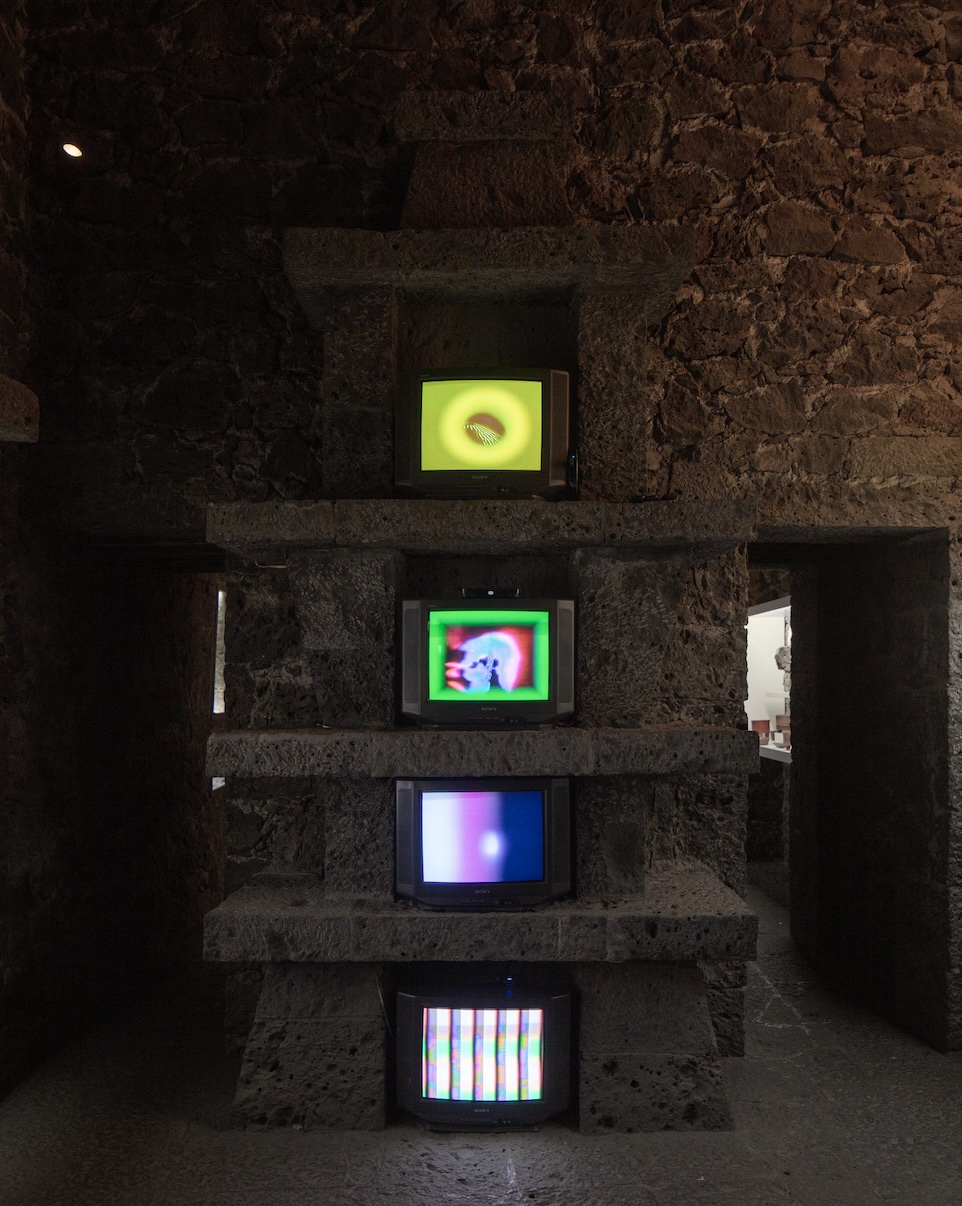
Five Sony televisions form a column in the center of one of the rooms. Titled Transmolecularization, a piece by Miko Reversa for Carolina Fusilier, each screen contains images generated through analog VHS experiments and feedback loops. The process involves feeding a portion of a circuit’s output signal back into its input, creating a loop. Electromagnetic signals metabolize their own image—not as fixed forms but as vibrations. Colors combine into red, green, and blue: the RGB format contained in pixels sliding across the screen. One of Carolina Fusilier’s references is the 19th-century Russian cosmologist Nikolai Fyodorov, who believed that “since every being is material, it is subject to manipulation through technology.”*2 I think of the inverse: the machine as a material being modified by humans in pursuit of immortality.
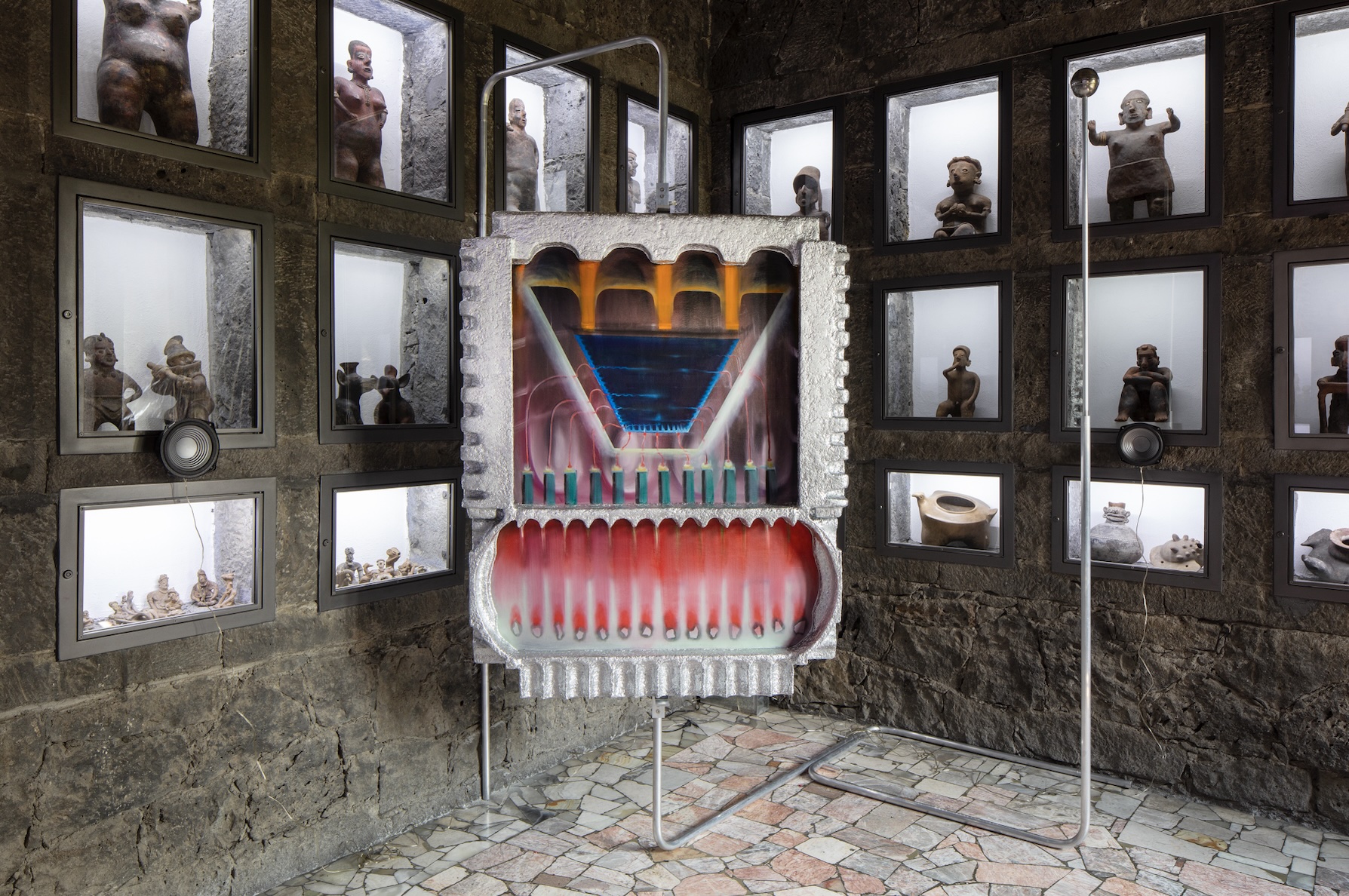
In Las inmortalistas I-VIII, there’s also a call to resurrection—not only because the piece reuses electronic packaging, but because it emits a spectral hum with slight variations, as if the painting itself is listening. I looked up the word séance online and found a Reddit thread that read: “It’s what Buffy fans do when they want to pretend they have magical powers that connect to dead spirits. It’s like connecting to AOL or waiting for someone to pick up a Skype/Discord call with a ghost.”*3 To speak with ghosts, you have to find the right channel—the frequency on which a message from the past, or maybe the future, might ride. The silver papier-mâché evokes an assembly of technological fantasies, aerodynamic and capable of piercing through time and space. And yet, Altar para F, located in the museum’s lower levels, is an oil painting in the shape of a hexagon. There’s something in that pure and simple geometry that invites passage, just as its purple and pink tones call forth mysticism.
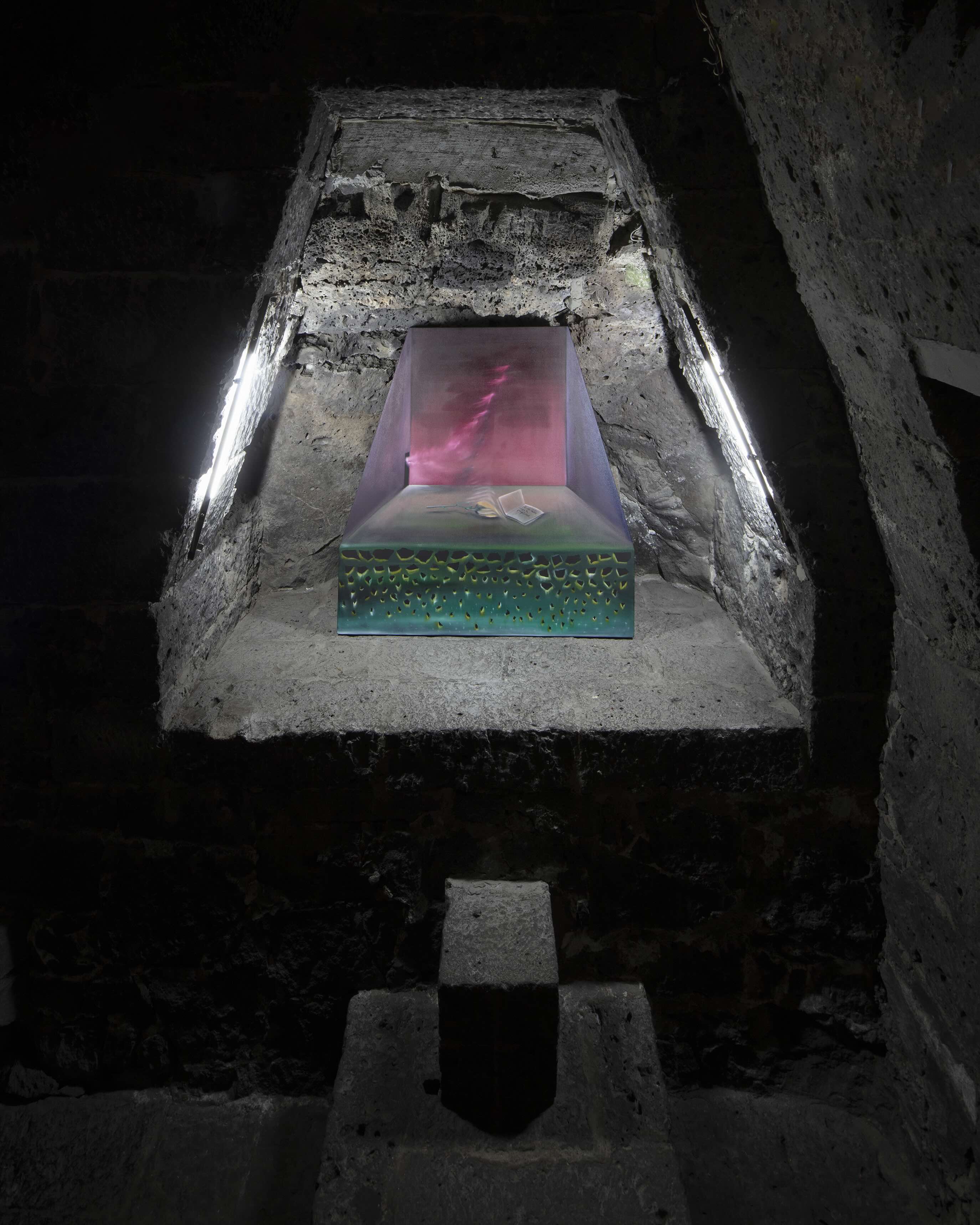
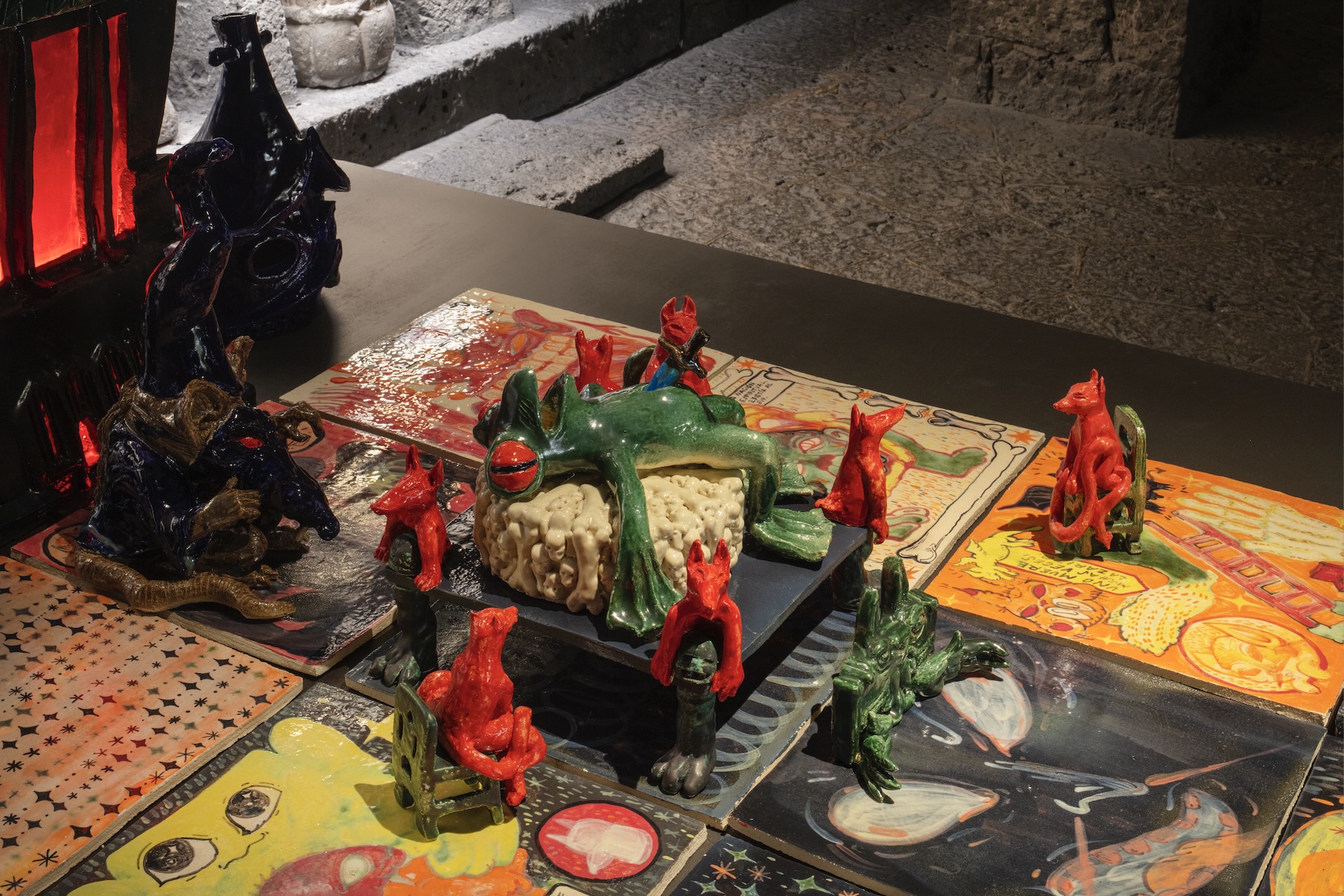
There’s a frog lying belly up. It has been sacrificed by a tiny obsidian blade—volcanic glass—perhaps in the ecstatic aftermath of a never-ending party at Rana Disco Club. The music veers into the genre of “exotica,” and I want to dance with the fox-demon witnesses, the wolverine host, and the Rat Wizard King. Paloma Contreras’s work seeks to stir the underworld, specifically in search of the modernisms that, like 19th-century galvanic frogs, are corpses that sometimes come back to life.
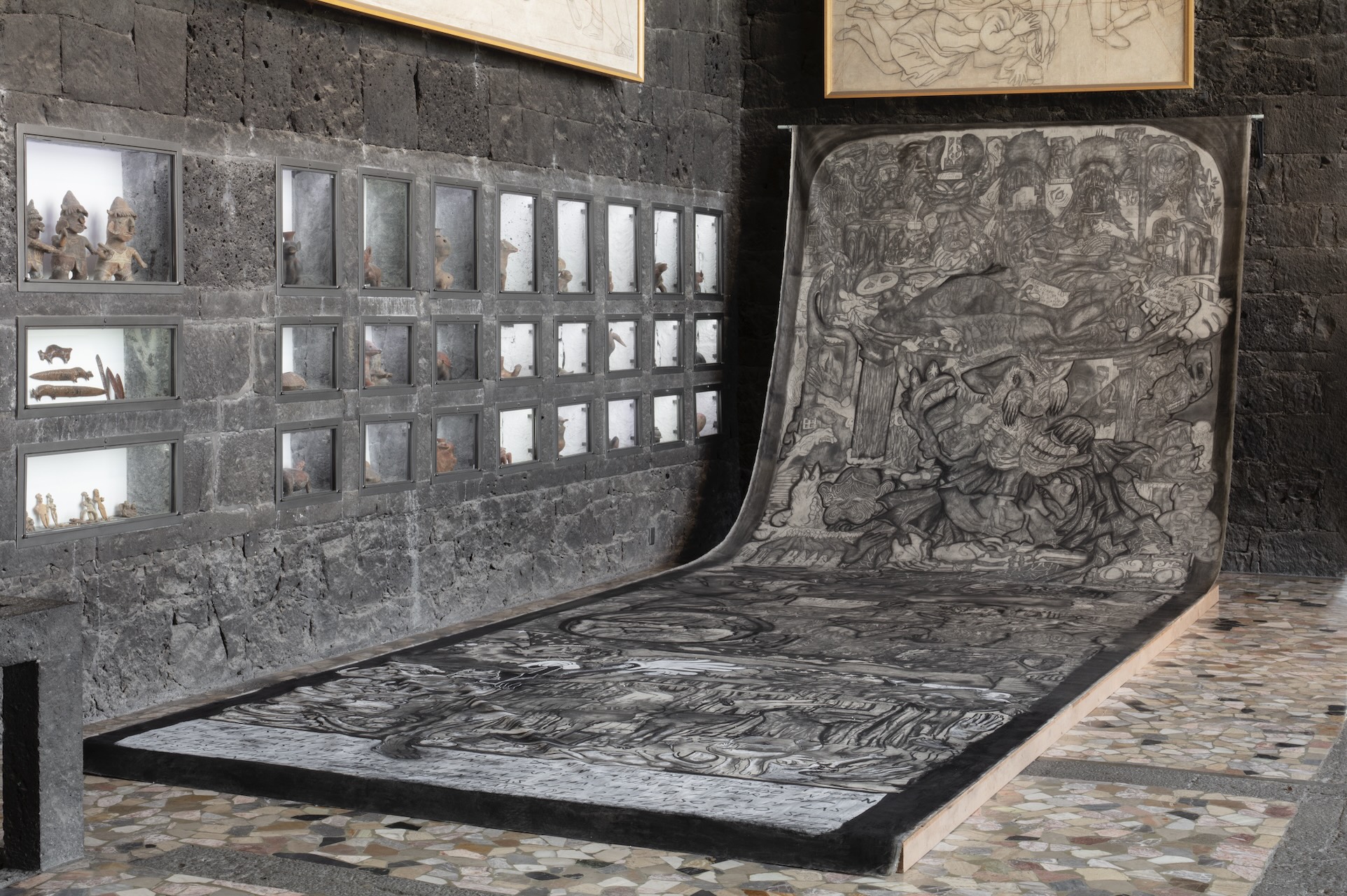
Where else could Diego Rivera’s sketches exist, if not in the cosmic domain of the Anahuacalli? Their monumentality feels celestial—with titles like Mitin A y Mitin B and El hombre técnico, they stand like time machines before the windows. Paloma’s murals, by contrast, show the underside of those cursed dreams, filled with figures that, far from following pristine vanishing lines, resemble intestines, crucifixions, class struggle, bile… all cascading down the canvas in a vertiginous descent. Here, the cosmos isn’t headless, like Bataille’s figure—but the brain has indeed been replaced: by guts. One mural, titled Poltergeist y mi mejor amiga, references the kind of ghost made manifest through mischievous phenomena—objects breaking, televisions turning on, unexplained noises. Party-loving, unruly specters—poltergeists love to haunt any kind of home, especially one like this.
Translated to English by Luis Sokol
1: The exhibition can be visited through June 6, 2025. Organized in collaboration with TONO and curated by Karla Niño de Rivera and Samantha Ozer.
2: Cosmismo ruso. Tecnologías de la inmortalidad antes y después de la revolución de octubre. Boris Groys (comp.), Fulvio Franchi (trad.), Caja negra, 2021.
3: https://www.reddit.com/r/Pathfinder_RPG/comments/1996p1h/whats_a_seance_exactly/?rdt=40937
Published on April 27 2025